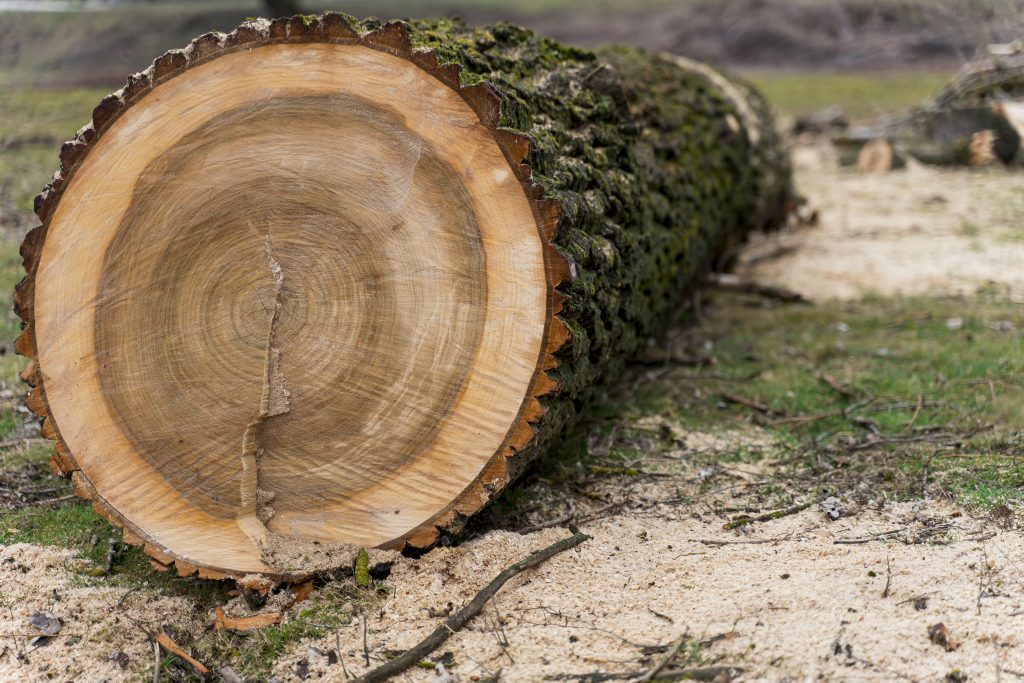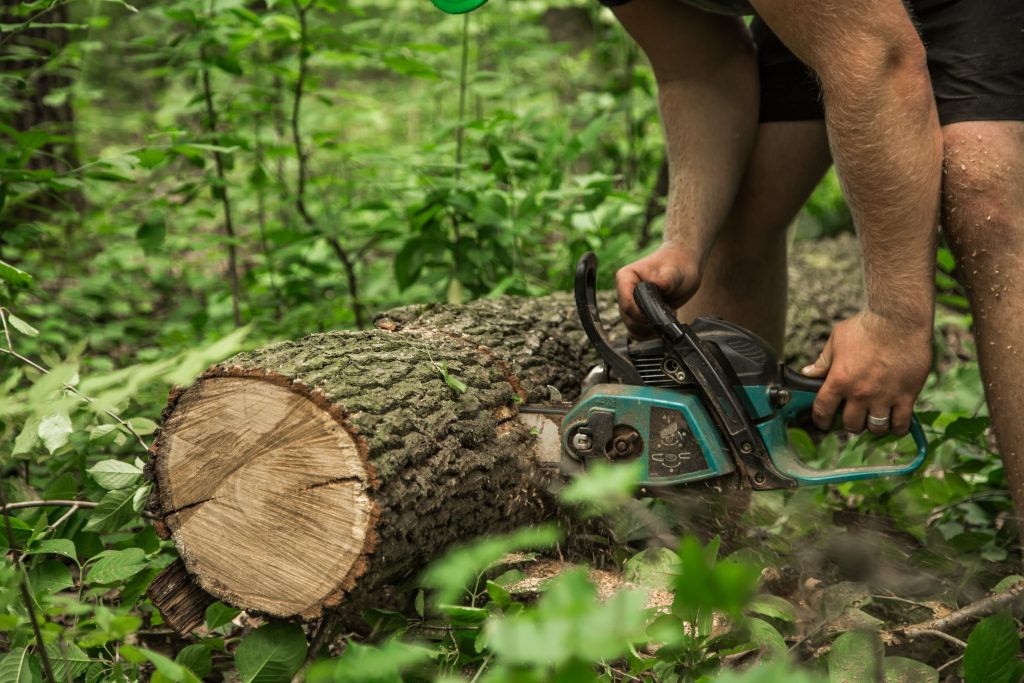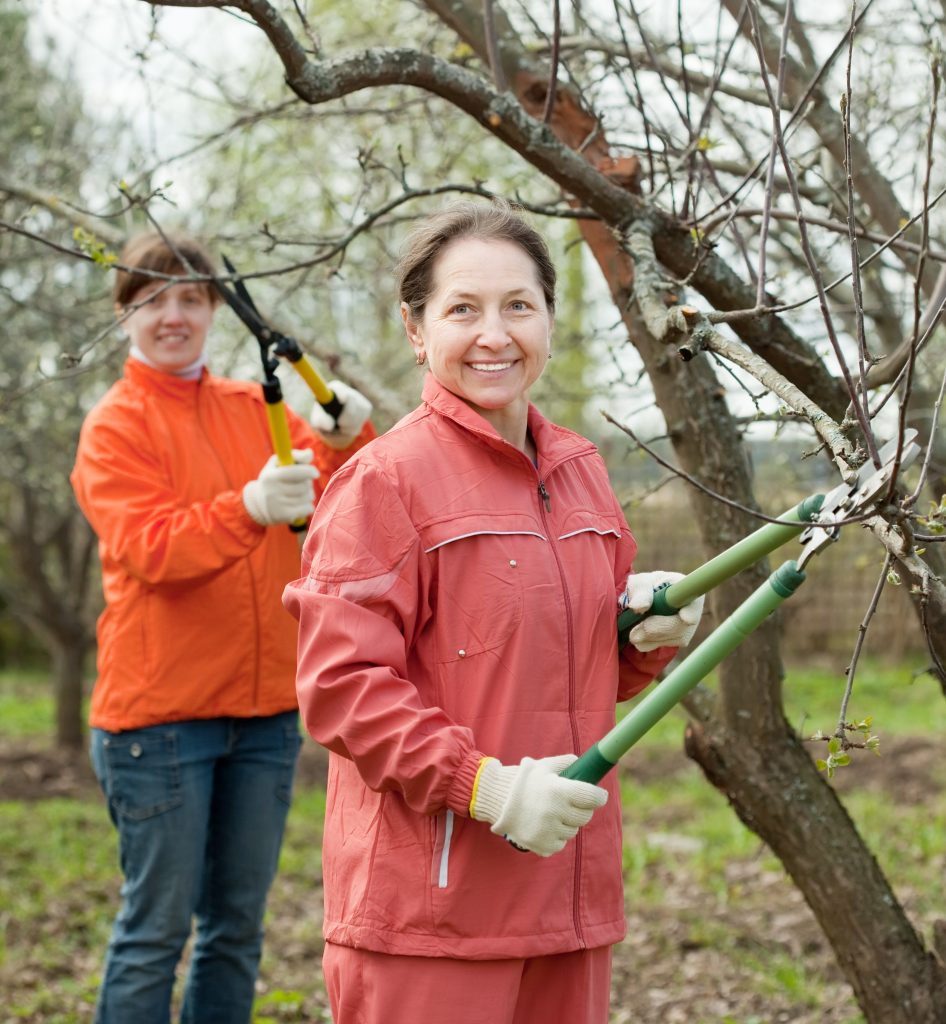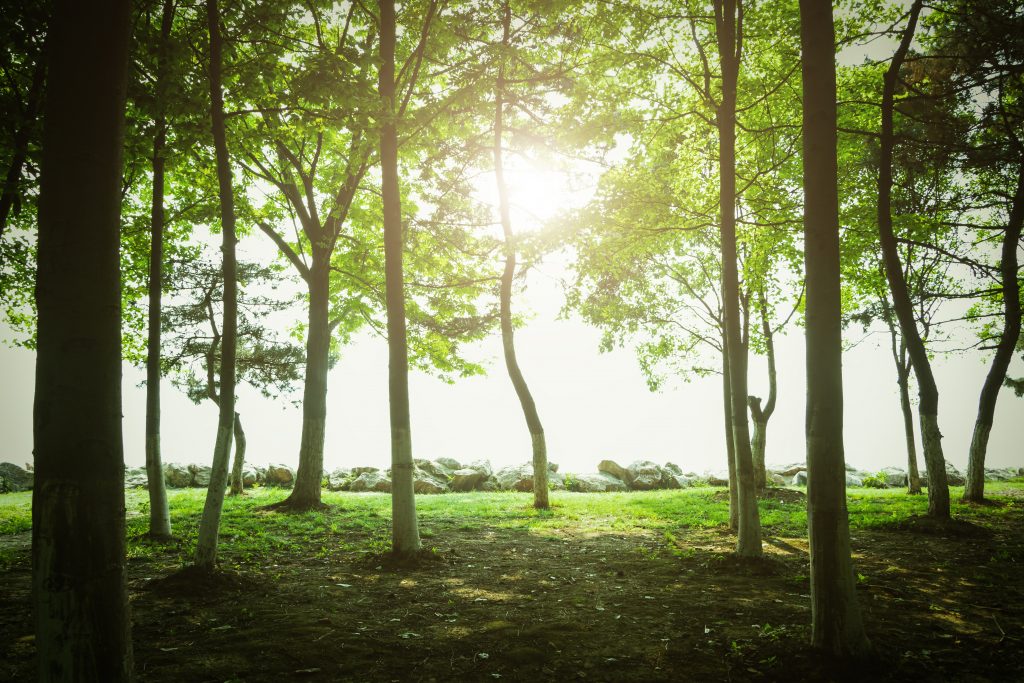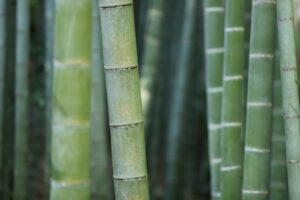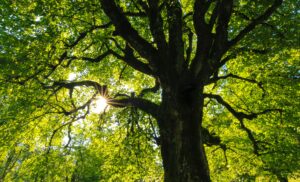Tree Stump Removal: What to Use?
Tree Stump Removal: What to Use?
Are you tired of staring at that stubborn tree stump in your yard? Well, you’re not alone. Did you know that over 80% of homeowners struggle with removing tree stumps? But don’t worry, we’ve got you covered. In this article, we’ll guide you through the best techniques and tools to use for effective tree stump removal. Say goodbye to that eyesore and reclaim your yard with our expert advice. Let’s get started!
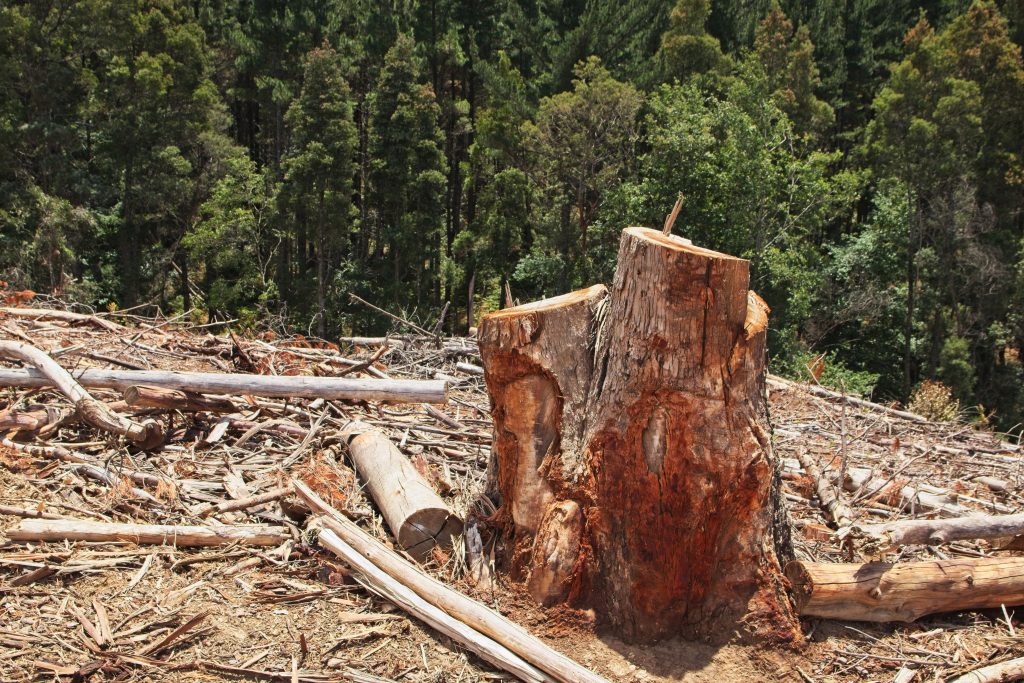
Key Takeaways
- Chemical stump removal, stump grinding, burning, digging, and natural decay are different methods of tree stump removal.
- Tree stump removal offers benefits such as improved aesthetics, increased safety, pest control, space utilization, and prevention of regrowth.
- The history and evolution of tree stump removal include ancient manual methods, the invention of stump grinders in the 19th century, and modern advancements in chemical solutions, controlled burning, and specialized equipment.
- Successful tree stump removal involves considering options, such as chemical stump removers, manual techniques, or hiring professionals, and choosing the best method based on the size and location of the stump. Safety precautions, such as wearing protective gear, inspecting the area, checking for underground utilities, and using power tools cautiously, are essential.
Introduction to Tree Stump Removal
If you want to remove a tree stump, you should know that there are various methods available. Here are some options to consider:
- Chemical stump removal: This method involves using a chemical solution to speed up the decomposition process of the stump. It is effective but can take several weeks to fully remove the stump.
- Stump grinding: This method involves using a stump grinder to grind the stump into small wood chips. It is a quick and efficient way to remove a stump, leaving behind no visible trace.
- Burning: This method involves setting the stump on fire until it burns down to ashes. It is a cost-effective option but requires careful supervision to prevent the fire from spreading.
- Digging: This method involves manually digging around the stump and removing it from the ground using tools like a shovel or an axe. It is a labor-intensive process but allows for complete removal of the stump.
- Natural decay: This method involves leaving the stump to naturally decompose over time. It is a passive approach that requires patience, but it is environmentally friendly.
Removing tree stumps offers several benefits, including:
- Aesthetics: Removing tree stumps improves the overall appearance of your yard or garden.
- Safety: Stumps can be hazardous, especially if they are hidden by grass or vegetation. Removing them reduces the risk of accidents.
- Pest control: Stumps can attract insects, termites, and other pests. Removing them helps to eliminate potential infestations.
- Space utilization: Removing stumps creates more usable space for planting, landscaping, or other outdoor activities.
- Preventing regrowth: Some tree stumps have the potential to sprout new growth. Removing them ensures that the tree does not grow back.
Understanding the different tree stump removal methods and their benefits is essential before deciding on the best approach for your specific situation. Now let’s delve into the history of tree stump removal.
History of Tree Stump Removal
To learn about the history of removing tree stumps, you can explore various resources online and in books. Understanding the history of this practice can provide insights into its significance and evolution over time. Tree stump removal has a long and storied history, dating back to ancient civilizations. In ancient Rome, for example, tree stumps were removed using axes and other manual tools. As technology advanced, so did the methods for removing tree stumps. In the 19th century, for instance, the invention of the stump grinder revolutionized the process, making it faster and more efficient. Today, there are numerous methods and tools available for removing tree stumps, including chemical stump removers, stump grinders, and even controlled burning. Each method has its own advantages and considerations, depending on factors such as the size and location of the stump. By understanding the history of tree stump removal, you can better appreciate the significance of modern techniques and make informed decisions when it comes to removing tree stumps on your property. Now, let’s explore some helpful tips for successful tree stump removal.
Tips
When it comes to removing tree stumps, there are several options to consider. You can choose to use chemical stump removers, which are designed to speed up the decomposition process. Alternatively, you may prefer manual removal techniques, such as digging or using a stump grinder. Lastly, if you want a hassle-free solution, hiring professional stump grinders can ensure efficient and effective stump removal.
Chemical Stump Removers
You can consider using chemical stump removers to effectively remove tree stumps from your yard. Chemical stump removal is one of the alternative methods available for getting rid of unwanted stumps. These products contain powerful chemicals that break down the wood, making it easier to remove. The process usually involves drilling holes into the stump and then pouring the chemical solution into them. Over time, the chemicals will speed up the decomposition process, allowing you to easily remove the stump. It’s important to follow the instructions carefully and take safety precautions when using chemical stump removers. However, if you prefer a more hands-on approach, manual removal techniques can also be effective in removing tree stumps from your yard.
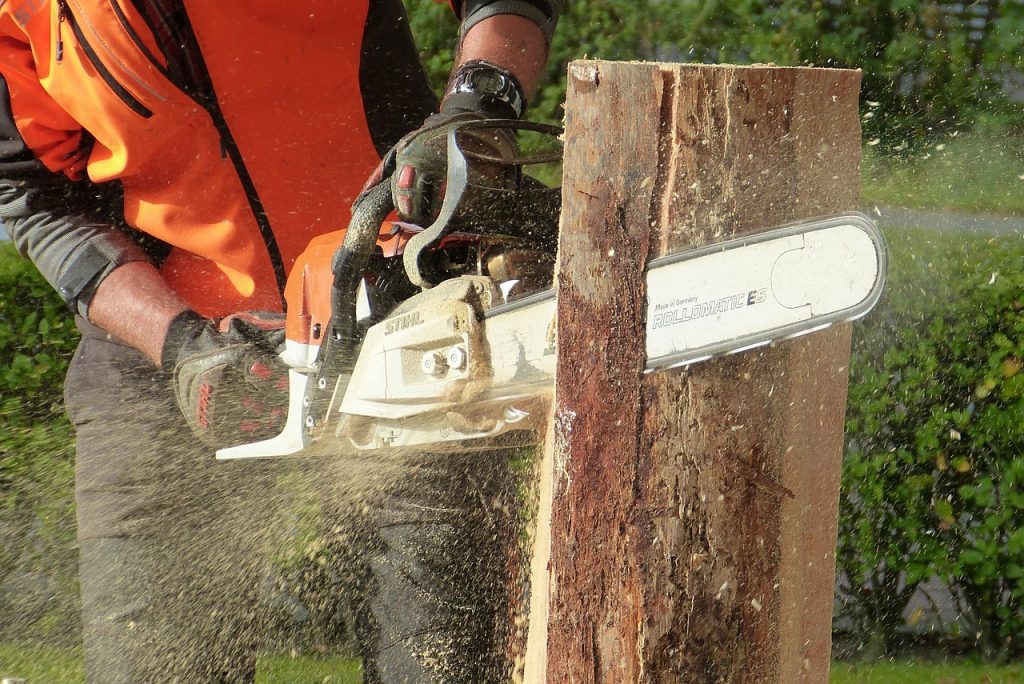
Manual Removal Techniques
Using manual techniques, such as digging or pulling, can be effective in getting rid of unwanted stumps in your yard. These manual removal techniques are alternative methods to chemical stump removers. To manually remove a stump, you will need some basic tools like a shovel, an axe, and a chainsaw. Start by digging around the stump to expose the roots. Then, use the axe to cut through the roots and loosen the stump. Once the roots are cut, you can try pulling the stump out of the ground using a truck or tractor. However, keep in mind that manual removal can be physically demanding and time-consuming, especially for larger stumps. If you prefer a quicker and easier solution, hiring professional stump grinders is the way to go.
Hiring Professional Stump Grinders
Now that you’ve explored the various DIY methods for removing tree stumps, let’s discuss the option of hiring professional stump grinders. When it comes to tackling stubborn tree stumps, sometimes it’s best to leave it to the experts who have access to specialized professional equipment. Professional stump grinders are equipped with powerful machinery specifically designed for efficient and effective stump removal. These machines can quickly grind down stumps to below ground level, eliminating any trace of the stump. Unlike DIY methods, professional stump grinding ensures a thorough and complete removal, preventing any future regrowth. Additionally, hiring professionals saves you time and effort, allowing you to focus on other tasks. Now, let’s delve into the traits of effective tree stump removal techniques, which will further enhance your understanding of this process.
Traits of Effective Tree Stump Removal Techniques
One of the traits of effective tree stump removal techniques is their ability to completely eliminate the stump from the ground. When it comes to removing tree stumps, there are two main options that are considered effective: using chemical removers or employing efficient manual methods. Chemical removers are substances specially formulated to break down the stump over time. These products are applied directly to the stump, where they penetrate the wood and accelerate the decomposition process. While chemical removers can be effective, they take time to work and may require multiple applications. On the other hand, efficient manual methods involve physically removing the stump from the ground. This can be done by using a stump grinder, which is a powerful machine that grinds the stump into small wood chips. Alternatively, you can opt for digging out the stump using a shovel or an excavator. Both methods require physical labor and may be more time-consuming than using chemical removers. However, they offer the advantage of immediate stump removal. Now that you understand the traits of effective tree stump removal techniques, let’s explore the steps for effective tree stump removal.
Steps for Effective Tree Stump Removal
To effectively remove a tree stump, it’s important to start by assessing the size and condition of the stump. Here are three essential steps to follow:
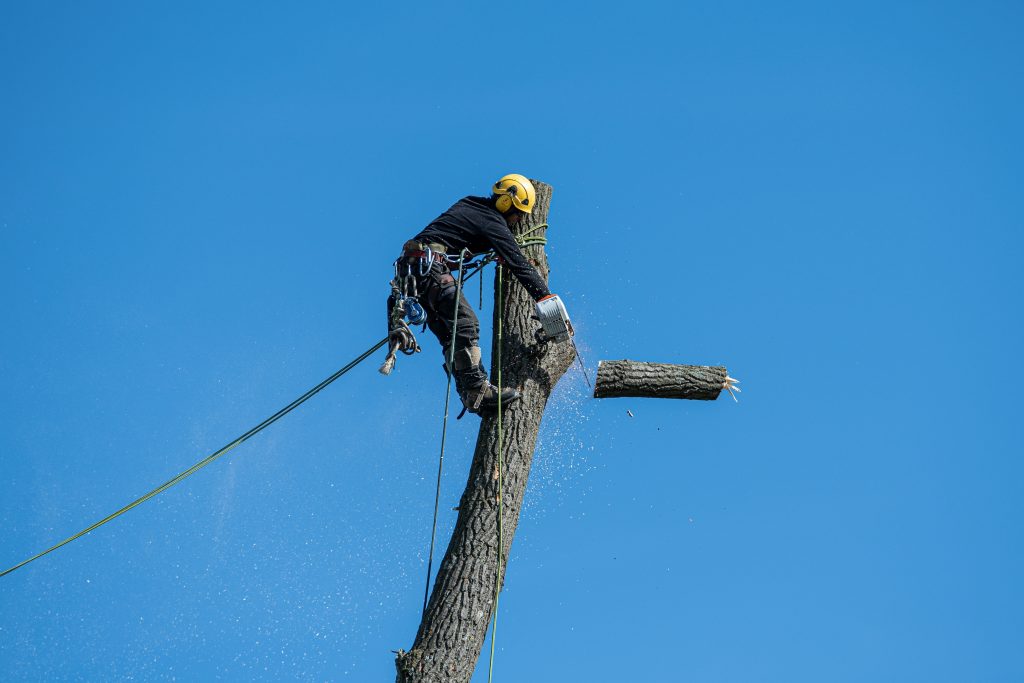
- Dig around the stump: Use a shovel to dig a trench around the stump, exposing the roots. This will make it easier to access and remove the stump later on. Be sure to dig deep enough to reach the entire root system.
- Cut the roots: With a tree root saw or an axe, carefully cut through the roots that are connected to the stump. Start with the smaller roots and work your way up to the larger ones. This will loosen the stump and make it easier to remove.
- Remove the stump: Once the roots are cut, you can now attempt to remove the stump. Use a stump grinder or a pry bar to lift and extract the stump from the ground. If the stump is particularly large or stubborn, you may need to enlist the help of a professional.
Goals
By effectively removing a tree stump from your property, you can now focus on achieving your landscaping goals or creating space for new projects. Tree stump removal offers several benefits, but it also comes with its own set of challenges. Let’s take a closer look at both.
| Benefits | Challenges | |
|---|---|---|
| Enhanced aesthetics | Difficulties in extraction | |
| Prevention of pests and diseases | Potential damage to surrounding plants | |
| Elimination of tripping hazards | Heavy physical labor | |
| Opportunity for new landscaping ideas | Cost considerations | |
| Increased property value |
Removing a tree stump can greatly enhance the aesthetics of your property, allowing you to create the landscape of your dreams. It also helps prevent pests and diseases that can affect other plants in your garden. Additionally, eliminating tripping hazards ensures the safety of your family and visitors.
However, tree stump removal is not without its challenges. Extraction can be difficult, especially if the stump is large or deeply rooted. There is also a risk of damaging surrounding plants during the removal process. Moreover, the physical labor involved can be strenuous and time-consuming. Finally, cost considerations must be taken into account, as professional removal services can be expensive.
Habits for Effective Tree Stump Removal
Understanding the benefits and challenges of tree stump removal can help you approach the task more effectively. When it comes to removing tree stumps, there are certain habits and traits that can make the process smoother and more efficient. One important habit is being prepared with the right tools and equipment. This includes having a stump grinder or digging tools, safety gear such as gloves and goggles, and a plan for disposing of the stump debris. Another important habit is patience. Removing a tree stump can be a time-consuming process, especially if the roots are deep and extensive. Taking your time and being methodical in your approach will yield better results. Additionally, having a strong work ethic and determination are valuable traits for this task. It can be physically demanding, so being willing to put in the effort and stay focused will help you achieve your goal.
In a real-life story, a homeowner named Sarah was faced with the task of removing a large tree stump from her backyard. She diligently researched the best methods and tools for stump removal and gathered all the necessary equipment. With patience and determination, she slowly and methodically worked through the stump, carefully grinding away at the roots. It took several hours of hard work, but Sarah’s efforts paid off when she finally succeeded in removing the stump completely. Her commitment to the task and her willingness to put in the necessary effort were key factors in her success.
A Real-Life Story
In Sarah’s real-life story, you can see the impact of patience and determination on the successful removal of a large tree stump. Sarah had always dreamed of having a beautiful garden in her backyard, but there was one major obstacle standing in her way – a stubborn tree stump that refused to budge. She knew that removing a tree stump could be a challenging task, but she was determined to overcome it.
Sarah began by researching different methods for tree stump removal and decided to try the chemical method. She carefully followed the instructions and applied the stump remover to the stump. However, after several weeks, she realized that the chemical method was not working as effectively as she had hoped.
Undeterred, Sarah decided to try a more physical approach. She rented a stump grinder and spent hours grinding away at the stubborn stump. It was hard work, but Sarah persisted, fueled by her determination to achieve her dream garden.
After several days of grinding, Sarah finally succeeded in removing the tree stump. It was a moment of triumph for her, and she felt a great sense of accomplishment. Sarah’s real-life experience highlights the challenges faced when removing a large tree stump, but also demonstrates the importance of patience and determination in achieving success.
Transitioning to the section about ‘quotes,’ it is clear that Sarah’s story is just one example of the many real-life experiences people have had with tree stump removal.
Quotes
Sarah’s determination paid off as she successfully removed the stubborn tree stump from her backyard. Real life stories like Sarah’s showcase the benefits and insights gained from tackling challenging tasks head-on. Removing a tree stump can be a daunting task, but with the right tools and knowledge, it can be accomplished. One of the secrets to successful stump removal is using the right equipment. Stump grinders are commonly used to grind away the stump and its roots, making it easier to remove. These machines can be rented from equipment rental companies or hired from professionals. Another secret is to ensure safety during the removal process. Wearing protective gear, such as gloves and goggles, is essential to prevent injuries. Additionally, it is crucial to have a plan in place for disposing of the stump and any resulting debris. By following these tips and tricks, you can tackle tree stump removal with confidence and achieve a clean, stump-free yard.
Secrets
One of the secrets to successfully tackling the challenge of removing a stubborn tree stump is having the right equipment. Without the proper tools, the task can be incredibly difficult and time-consuming. So, what equipment should you use? Well, a stump grinder is often the best option. This powerful machine is specifically designed to grind away the stump and roots, making the removal process much easier. With its sharp teeth and high-speed cutting action, a stump grinder can quickly reduce even the largest stumps to wood chips. Another secret to effective stump removal is understanding the anatomy of the stump. By learning how the roots are connected and where they extend, you can strategically cut and remove them, minimizing the effort required. Additionally, applying a stump removal chemical can help to speed up the decomposition process, making it easier to remove the stump. Now that you know the secrets, let’s delve into some insights and techniques that will further assist you in successfully removing that stubborn tree stump.
Insights and Techniques
To make the process easier, you can try using a stump grinder to quickly reduce the size of the stubborn tree stump. Stump grinding is a popular technique for removing tree stumps effectively. This method involves using a powerful machine with a rotating cutting disk to grind the stump into small wood chips.
One of the key insights in stump grinding is the importance of safety precautions. Before using a stump grinder, it is crucial to wear protective gear, such as safety goggles, gloves, and sturdy boots. Additionally, it is recommended to clear the area around the stump of any debris or obstacles that could hinder the grinding process.
When operating a stump grinder, it is essential to follow proper technique. Start by positioning the machine’s cutting disk above the stump, ensuring that it is level and centered. Slowly lower the cutting disk onto the stump, gradually moving it from side to side. This technique allows the cutting disk to grind away the wood in a controlled manner.
Benefits of Tree Stump Removal
Now that you have gained insights into the techniques used for tree stump removal, let’s explore the benefits of this process. Removing tree stumps comes with a multitude of advantages that can greatly enhance your outdoor space.
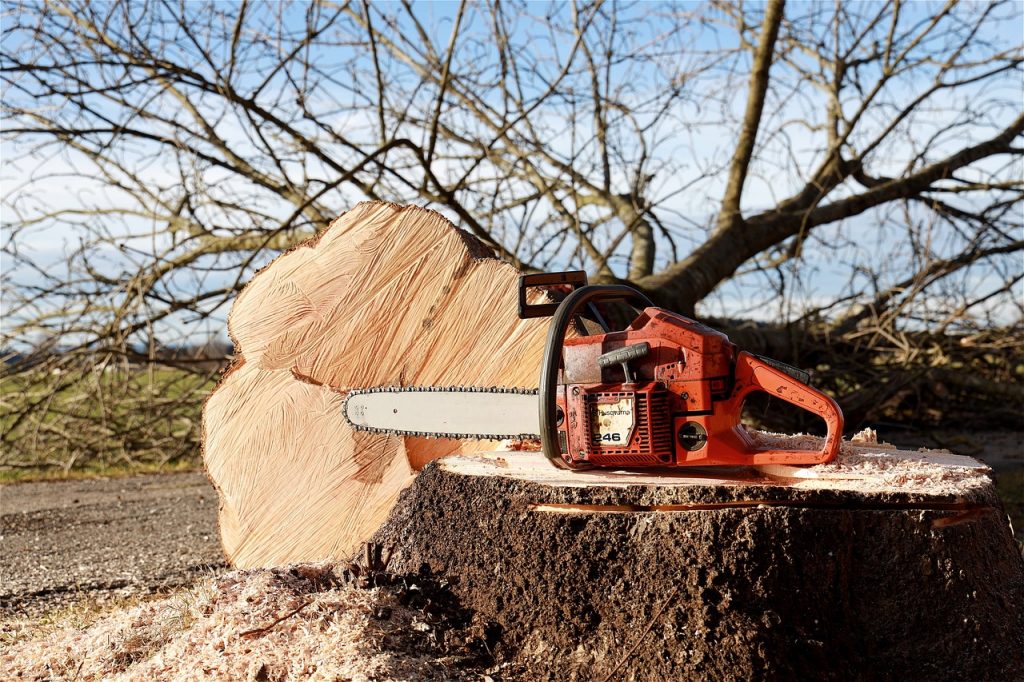
Firstly, removing tree stumps improves the aesthetics of your yard or garden. Stumps can be unsightly and disrupt the overall appearance of your landscape. By removing them, you can create a more visually pleasing environment.
Secondly, stump removal eliminates potential hazards. Stumps can be a tripping hazard, especially if they are hidden by grass or foliage. Removing them reduces the risk of accidents, making your outdoor space safer for you, your family, and your guests.
Additionally, removing tree stumps allows you to fully utilize your outdoor space. Stumps can take up valuable space, making it difficult to plant new trees, flowers, or build structures. By removing them, you can maximize the use of your land and create more functional areas.
Furthermore, stump removal prevents the growth of new shoots. Tree stumps have the potential to sprout new shoots, leading to unwanted growth that can be difficult to manage. Removing the stumps eliminates this problem, ensuring that unwanted trees or shrubs do not take over your garden.
Lessons
When it comes to removing tree stumps, there are several effective techniques you can use. Whether you choose to grind, burn, or manually remove the stump, each method has its own advantages and considerations. It’s important to have the right tools for the job, such as stump grinders, axes, and chainsaws, to ensure efficient and safe removal. Additionally, it’s crucial to take safety precautions, such as wearing protective gear and assessing the surrounding area, to prevent accidents and injuries during the stump removal process.
Effective Stump Removal Techniques
You can try using a stump grinder to effectively remove tree stumps. When it comes to removing tree stumps, there are two main methods: chemical and manual. Chemical methods involve using chemicals to speed up the decomposition process, while manual methods require physical labor to dig and remove the stump. Both methods have their pros and cons. Chemical methods are relatively easy to use and require less physical effort, but they can take a long time to fully decompose the stump. On the other hand, manual methods can be time-consuming and physically demanding, but they offer immediate results. If you’re unsure about tackling the job yourself, hiring professionals can be a great option. They have the expertise and specialized tools to efficiently and safely remove tree stumps. Transitioning into the next section about ‘tools for tree stumps,’ it’s worth mentioning that having the right tools is essential for a successful stump removal process.
Tools for Tree Stumps
If you’re looking for an effective way to tackle those pesky tree stumps, having the right tools is crucial. One of the most efficient tools for tree stump removal is a tree stump grinder. This powerful machine is designed to grind down the stump and its roots into small wood chips, making it easier to remove or cover up. With its sharp rotating blades, the tree stump grinder can quickly and efficiently get the job done. If you prefer a more manual approach, there are also tools available for tree stump extraction. These tools, such as a stump puller or a digging bar, allow you to physically remove the stump by digging around it and pulling it out. However, it’s important to note that these methods can be more labor-intensive and time-consuming. Now that you know about the different tools available, let’s discuss some safety precautions for tree stump removal.
Safety Precautions for Removal
Before starting the process, it’s important to be aware of the safety precautions for removing tree stumps. Preventing accidents should be your top priority. Firstly, always wear proper protective gear, such as gloves, safety goggles, and sturdy boots. This will shield you from any flying debris or sharp objects. Additionally, make sure to inspect the area around the stump for any potential hazards, like rocks or roots, that could cause you to trip or fall. It’s also crucial to check if there are any underground utilities, such as gas or water lines, before digging. Lastly, use caution when using power tools or machinery, following the manufacturer’s guidelines and keeping a safe distance from others. By taking these safety measures, you can ensure a successful and accident-free stump removal process. Now, let’s move on to the next section about routines.
Routines
Once you’ve established a routine for tree stump removal, it becomes easier and more efficient to tackle the task. Developing good habits for success can make a significant difference in the outcome of your efforts. One common mistake that people make is not properly assessing the stump before starting the removal process. It’s crucial to determine the size, location, and condition of the stump to choose the right tools and techniques. Another mistake is neglecting safety precautions, such as wearing protective gear and ensuring the area is clear of bystanders. To establish an effective routine, start by gathering the necessary tools, including a chainsaw, shovel, and stump grinder. Clearing the area around the stump and removing any debris will make the task easier. Next, use the chainsaw to cut the stump as close to the ground as possible. Finally, utilize the stump grinder to remove the remaining wood and roots. By following these steps consistently, you’ll develop a routine that maximizes efficiency and minimizes mistakes. Now, let’s explore the pros and cons of different methods for tree stump removal.
Pros and Cons
To make an informed decision about which method for tree stump removal is best for you, consider the pros and cons of each option. One common mistake people make is underestimating the difficulty of removing a tree stump. It may seem like a simple task, but it can quickly become labor-intensive and time-consuming. Hiring a professional stump removal service has its pros and cons. On the positive side, professionals have the expertise and equipment to efficiently remove the stump, saving you time and effort. However, it can be expensive, and you may need to schedule an appointment, which could delay your project. Another option is using chemical stump removers. These products are convenient and relatively affordable. However, they can take several weeks or even months to fully break down the stump. Additionally, they may harm surrounding vegetation if not used properly. Lastly, manual removal is an option, but it requires physical strength and patience. It can be a cost-effective choice, but it is also the most labor-intensive. Now that you understand the pros and cons of each method, let’s move on to the dos and don’ts of tree stump removal.
Dos and Dont’s
When using chemical stump removers, it’s important to carefully follow the instructions to avoid harming surrounding vegetation. These products can be effective in getting rid of tree stumps, but they must be used correctly to ensure safety and success. Here are some dos and don’ts to keep in mind when using chemical stump removers:
| Dos | Don’ts | Common Mistakes |
|---|---|---|
| Read the instructions carefully and follow them precisely | Don’t apply the product in excessive amounts | Using too little or too much product |
| Wear protective clothing, gloves, and eyewear | Don’t leave the product unattended | Neglecting safety precautions |
| Apply the chemical only to the stump and avoid contact with surrounding plants or grass | Don’t mix different stump remover products | Combining incompatible chemicals |
Mistakes to Avoid
A common mistake is not wearing protective clothing when using chemical stump removers, which can lead to potential harm. When dealing with chemicals, it is crucial to prioritize your safety. Chemical stump removers contain powerful substances that can cause skin irritation or even burn your skin upon contact. To avoid this, always wear long sleeves, pants, gloves, and goggles before handling these products. Another common mistake is not following the instructions provided by the manufacturer. Each chemical stump remover has specific guidelines on how to use it effectively and safely. Failure to follow these instructions can lead to ineffective results or, worse, accidents. Additionally, it is important to be aware of the surrounding area when using chemical stump removers. Ensure that there are no flammable materials nearby and keep pets and children away to prevent any accidents. By avoiding these common mistakes and following best practices, you can safely and effectively remove tree stumps from your property.
These key takeaways will help you avoid potential harm and achieve successful stump removal.
Key Takeaways
By following these key takeaways, you can ensure a safer and more successful stump removal process. One of the main benefits of stump removal is the prevention of potential hazards. Tree stumps can pose dangers to people and property, especially when they are hidden and easily tripped over. Removing the stumps eliminates these risks, making your outdoor space safer for everyone. Additionally, stump removal can enhance the aesthetics of your landscape. Tree stumps can be unsightly and disrupt the overall beauty of your yard. By removing them, you can create a more visually appealing environment and improve the overall curb appeal of your property. Furthermore, stump removal allows for better utilization of your outdoor space. Tree stumps can take up valuable space that could be used for other purposes such as planting new trees, installing a garden, or creating a seating area. Removing the stumps opens up possibilities for enhancing the functionality of your yard. With these key takeaways in mind, let’s explore the specific action steps for tree stump removal.
Specific Action Steps for Tree Stump Removal
When it comes to removing tree stumps, having the right tools is essential. In this discussion, we will explore the various tools that can be used for stump removal, including stump grinders, hand tools, and chemical solutions. Additionally, we will delve into effective removal techniques that can help you tackle even the toughest stumps, as well as safety precautions that should be taken to ensure a successful and accident-free removal process.
Tools for Stump Removal
There’s no better tool for stump removal than a stump grinder. When it comes to removing tree stumps, manual and chemical methods are often considered. Manual removal involves digging around the stump and using tools like axes or shovels to break it apart. While this method can be effective for smaller stumps, it requires a lot of physical effort and time. On the other hand, chemical methods involve using chemicals to accelerate the decomposition process. This method is cost-effective and requires less physical labor, but it can take several weeks or even months for the stump to fully decay. Now that you understand the different approaches to stump removal, let’s explore some effective techniques for getting rid of those stubborn stumps.
Effective Removal Techniques
If you want to get rid of those stubborn stumps, you can try using a combination of manual and chemical methods for more effective removal. One popular technique is tree stump grinding, which involves using a stump grinder to break down the stump into small wood chips. This method is highly efficient and leaves you with a clean and level surface. Another option is natural stump decay, where you allow the stump to decompose over time. This method is less labor-intensive but can take several years for the stump to fully decay. Both methods have their advantages, so you can choose the one that suits your needs and preferences. Now that you know effective removal techniques, it’s important to consider safety precautions during the removal process.
Safety Precautions During Removal
To ensure your safety during the removal process, it’s important to wear protective gear such as gloves, goggles, and sturdy boots. Proper safety gear is essential to protect yourself from any potential hazards that may arise during tree stump removal. Gloves will shield your hands from sharp edges and splinters, while goggles will prevent any debris from entering your eyes. Sturdy boots will provide stability and protect your feet from falling branches or tools. Additionally, make sure to use the proper equipment for the job. This includes a chainsaw or stump grinder, depending on the size of the stump. Following these safety precautions and using the correct gear and equipment will help ensure a safe and successful tree stump removal process.
Frequently Asked Questions
How Long Does It Typically Take to Remove a Tree Stump?
Removing a tree stump can vary in time depending on the size and complexity of the stump. It typically takes a few hours to a few days. Factors such as the tools used and the skill of the person performing the removal can also affect the time.
Can Tree Stump Removal Be Done on Any Type of Tree?
To remove a tree stump, you can use various equipment and methods. However, it’s essential to consider the type of tree and its size. Hiring a professional for stump removal can be costly, but they have the expertise and necessary tools.
Are There Any Environmental Considerations to Take Into Account When Removing a Tree Stump?
When removing a tree stump, it’s important to consider the environmental impact. There are eco-friendly options available that minimize harm to the ecosystem. Choose methods that prioritize sustainability and prevent further damage to the environment.
What Are the Potential Risks or Dangers Associated With DIY Tree Stump Removal?
Potential injuries and equipment safety are important considerations when attempting DIY tree stump removal. Without proper knowledge and precautions, risks such as accidents and bodily harm can arise. It’s crucial to prioritize safety and seek professional help if needed.
Are There Any Alternative Methods to Physically Removing a Tree Stump?
There are alternative methods to physically removing a tree stump. Chemical alternatives, such as stump removal products, can be effective. Another option is natural decay, which involves letting the stump decompose over time.
